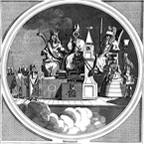Abstract [It]: Il sistema partitico austriaco vede al momento sette formazioni con una consistente rilevanza a livello federale, a cui si aggiungono movimenti forti in contesti regionali o locali, ma per il momento non in grado di acquisire un peso politico in ambito nazionale. Dalla fine del secondo conflitto mondiale, i governi federali sono stati in larga parte incentrati sul ruolo predominante del partito conservatore ÖVP o di quello socialdemocratico SPÖ, in molti casi in alleanza tra loro, a volte con la partecipazione di formazioni minori. A partire dai primi anni 2000, invece, sono sorti Gabinetti in larghissima parte a guida ÖVP, a cui si sono aggiunti in coalizione alternativamente partiti di destra come la FPÖ, o gli ambientalisti GRÜNE. In questo contributo viene illustrata l’attuale situazione del panorama partitico austriaco, evidenziando le sorti correnti non solo delle formazioni storiche, ma anche di movimenti fino ad ora minoritari ma comunque presenti nel confronto elettorale sia federale che regionale e locale, ed ancora di soggetti di nuova formazione, per verificare quale impatto possano avere sugli equilibri politici ed istituzionali degli anni a venire.
Abstract [En]: The Austrian party system currently consists of seven parties with a consistent relevance at the federal level, to which are added strong movements in regional or local contexts, but for the time being unable to gain political weight at the national level. Since the end of World War II, federal governments have largely been centred on the predominant role of the conservative ÖVP or the social-democratic SPÖ party, in many cases in alliance with each other, sometimes with the participation of smaller formations. Since the early 2000s, on the other hand, very largely ÖVP-led cabinets have emerged, alternately joined in coalition by right-wing parties such as the FPÖ, or the environmentalists GRÜNE. This contribution illustrates the current situation of the Austrian party landscape, highlighting the current fate not only of the historical formations, but also of movements that have so far been in the minority but are nevertheless present in the federal, regional and local electoral confrontation, and also of newly formed subjects, in order to verify what impact they may have on the political and institutional balance in the years to come.
Scarica il file in formato PDF
SOMMARIO: 1. Introduzione. – 2. Österreichische Volkspartei (ÖVP). – 3. Sozialdemokratische Partei Österreichs(SPÖ).– 4. Freiheitliche Partei Österreichs (FPÖ). – 5. Die Grünen – Die Grüne Alternative. 6. MFG–Österreich Menschen – Freiheit – Grundrechte. – 7. NEOS – Das Neue Österreich und Liberales Forum. 8. Kommunistische Partei Österreichs (KPÖ). – Riflessioni conclusive.






